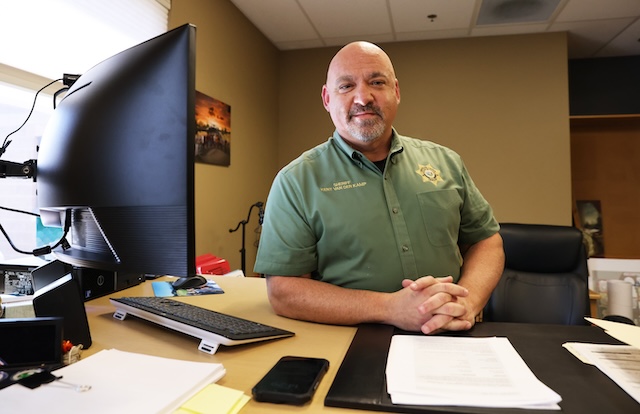What might geothermal exploration mean for the region?
Published 3:15 am Saturday, November 1, 2008
Just to the west of the Newberry National Volcanic Monument, a company is drilling more than 10,000 feet through the pumice and other surface rocks, looking for hot water or steam it can harness to produce geothermal power.
And Friday morning, some environmental advocates got a chance to ask people from the geothermal industry and land management agencies what that means for Central Oregon’s environment during a meeting of the Oregon Department of Energy’s geothermal working group.
The group held the meeting in Bend because organizers felt it would be beneficial to spark more interactions between the industry and the environmental community, said Carel DeWinkel with the Oregon Department of Energy.
Mike Riley, executive director of the Central Oregon Environmental Center, wanted to know where Davenport Power, which is developing the Newberry project, would get water from if it turned out it would need to inject water into wells to generate steam.
“We’re still trying to find out what’s going on under there,” said Al Waibel, a geology consultant with Davenport. The company doesn’t know whether it will need water or whether there’s enough water naturally to tap into, so it’s too early to say what it would do, he said.
Riley also asked about potential hot spots in Central Oregon identified in a federal study. Bob Deane, with the Deschutes National Forest, said the U.S. Forest Service would have to do studies to see if geothermal exploration is appropriate for new sites in the forest before leases are issued.
Mathias Perle with the Upper Deschutes Watershed Council asked how the drillers would avoid contaminating the groundwater in shallow aquifers with the water in deeper pockets or fissures; Waibel said the drilling process includes sealing up and cementing off the edges of the drill hole as the crews dig deeper to prevent contamination.
Asante Riverwind of the Sierra Club’s local chapter said that he felt Davenport was rushing through the permitting process and not meeting enough environmental benchmarks to make sure it doesn’t interfere with the hydrology or ecology of the Newberry area.
“If it’s going to be done, and it’s going to be green, there should be standards,” Riverwind said, adding there should be more significant studies conducted for the exploratory drilling.
Alex Sifford, who is doing work for the Oregon Department of Energy, also addressed the appearance of geothermal power plants. While they may cover 10 to 15 acres, that’s the total footprint of the power. The geothermal wells, pipelines and plants might look like a large facility compared with a smaller natural gas plant, he said, but natural gas’s footprint includes the gas fields where it’s extracted.
“It can look ugly to people,” he said of geothermal facilities, “but you see it all.”
The Friday meeting also included an update on geothermal energy projects in Oregon.
Davenport Power has completed and tested one well and has drilled 11,000 feet of a second one, which it still has to conduct tests on to see what kind of geothermal potential might be there, said Al Waibel, a geology consultant with Davenport. And what it finds on the second well might change how it drills the third well, he said — the first well had hot rocks, but not enough water or steam to turn turbines.
And other companies and organizations are looking elsewhere for places to tap into potential power underground.
At Neal Hot Springs in Eastern Oregon, for example, a company drilled exploratory wells in 2008 and has plans for a 26 megawatt power plant, he said, and a separate company is checking out the geothermal power potential at Crump Geyser in Lake County. In Klamath Falls, geothermally warmed water provides heat for hospitals, schools, a brew pub and convalescence homes.
And at the Oregon Institute of Technology, home of the Geo-Heat Center, the campus is expanding its geothermal projects, said John Lund, director of the center. Geothermal power already saves the campus about $1 million a year on its heating bill, Lund said, and now the university is planning on putting in two power plants, one using low temperatures and another one that taps into hotter water, hopefully around 300 degrees.
“Hopefully when this is done we’ll be 100 percent green except for the cars that drive on campus,” Lund said.






